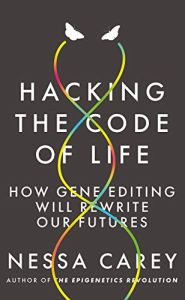Join getAbstract to access the summary!

Join getAbstract to access the summary!
Nessa Carey
Hacking the Code of Life
How Gene Editing Will Rewrite Our Futures
Icon Books, 2019
What's inside?
Gene editing may give humanity new power to cure disease, improve food crops and alter future generations of humans.
Recommendation
The breakthrough in gene editing known as CRISPR may offer cures for genetic disease, new treatments for cancer, and healthy new food crops that are resistant to pests and droughts. This raises fears of a new eugenics or an ecosystem catastrophe. British biologist Nessa Carey provides a concise guide for laypeople to the history and mechanics of gene editing and outlines its promise in agriculture and medicine. Her basic approach makes for a quick, easily digestible introduction to this burgeoning field.
Summary
About the Author
British biologist Nessa Carey, PhD, is a visiting professor at Imperial College, London, specializing in molecular biology and biotechnology. Her other books include The Epigenetics Revolution and Junk DNA: A Journey Through the Dark Matter of the Genome.

















Comment on this summary